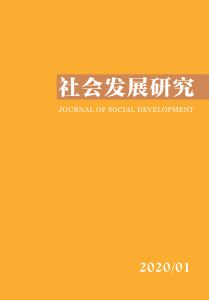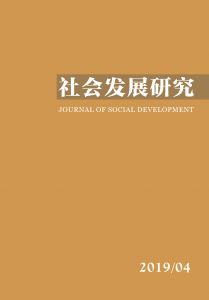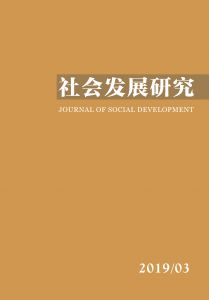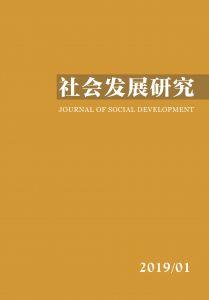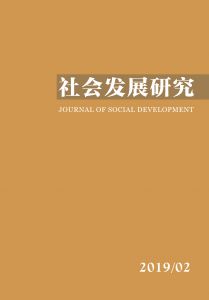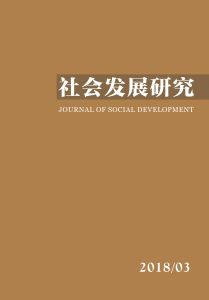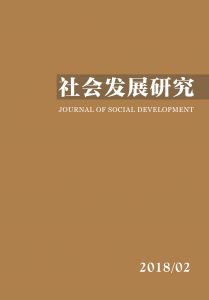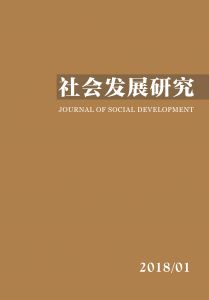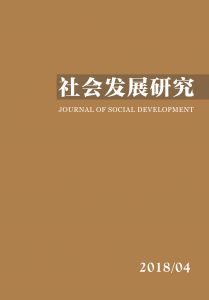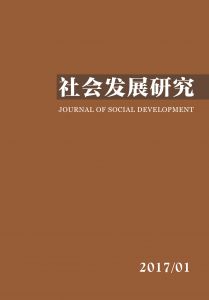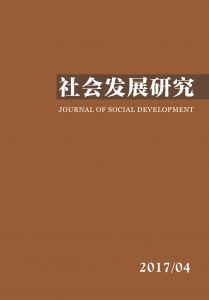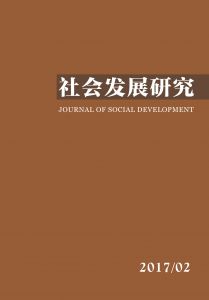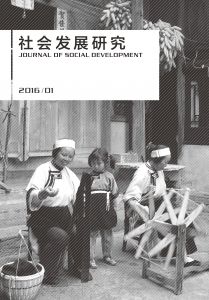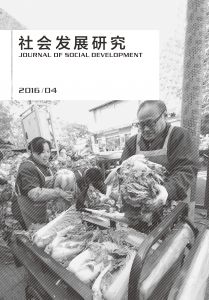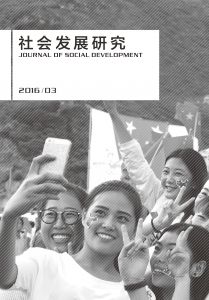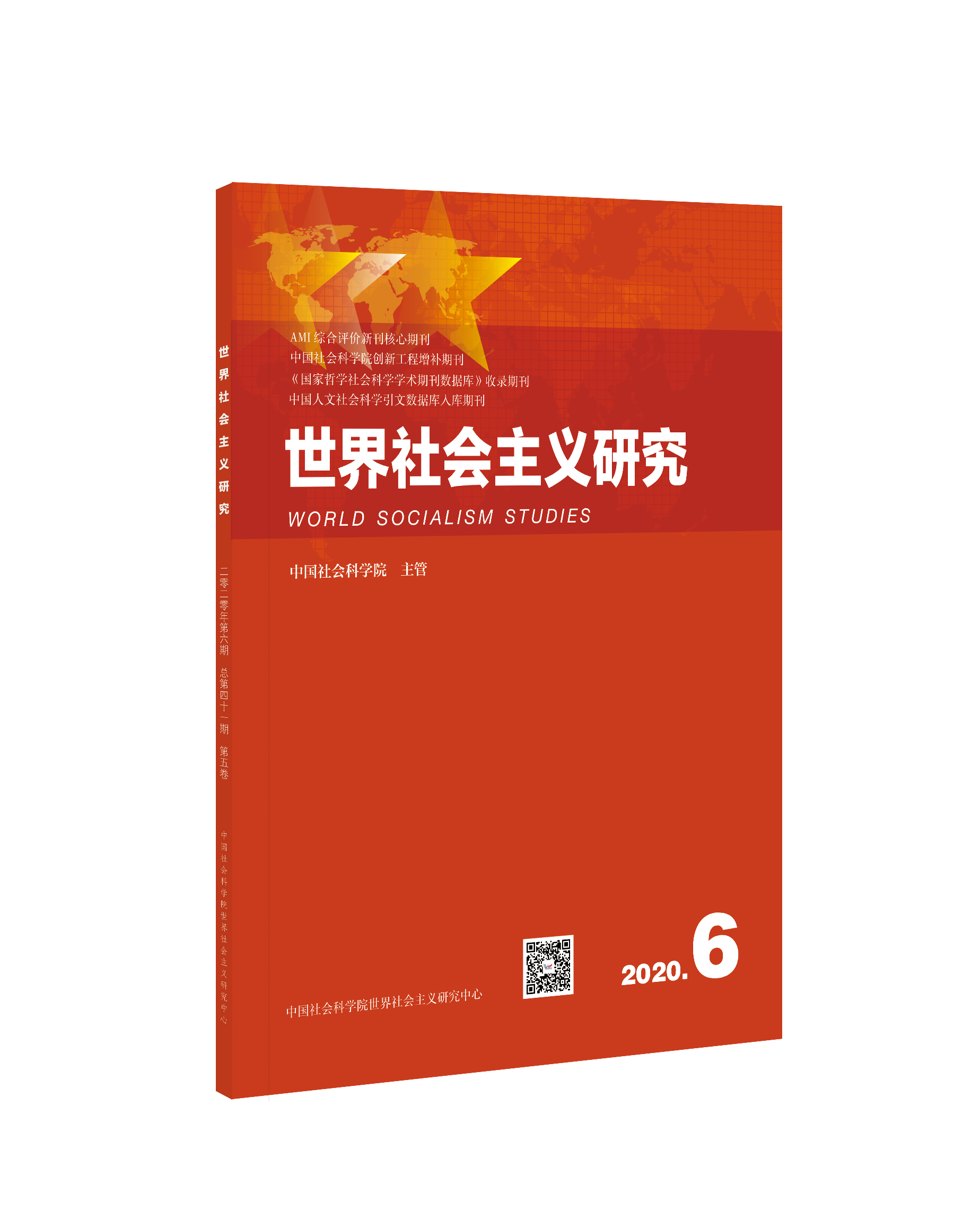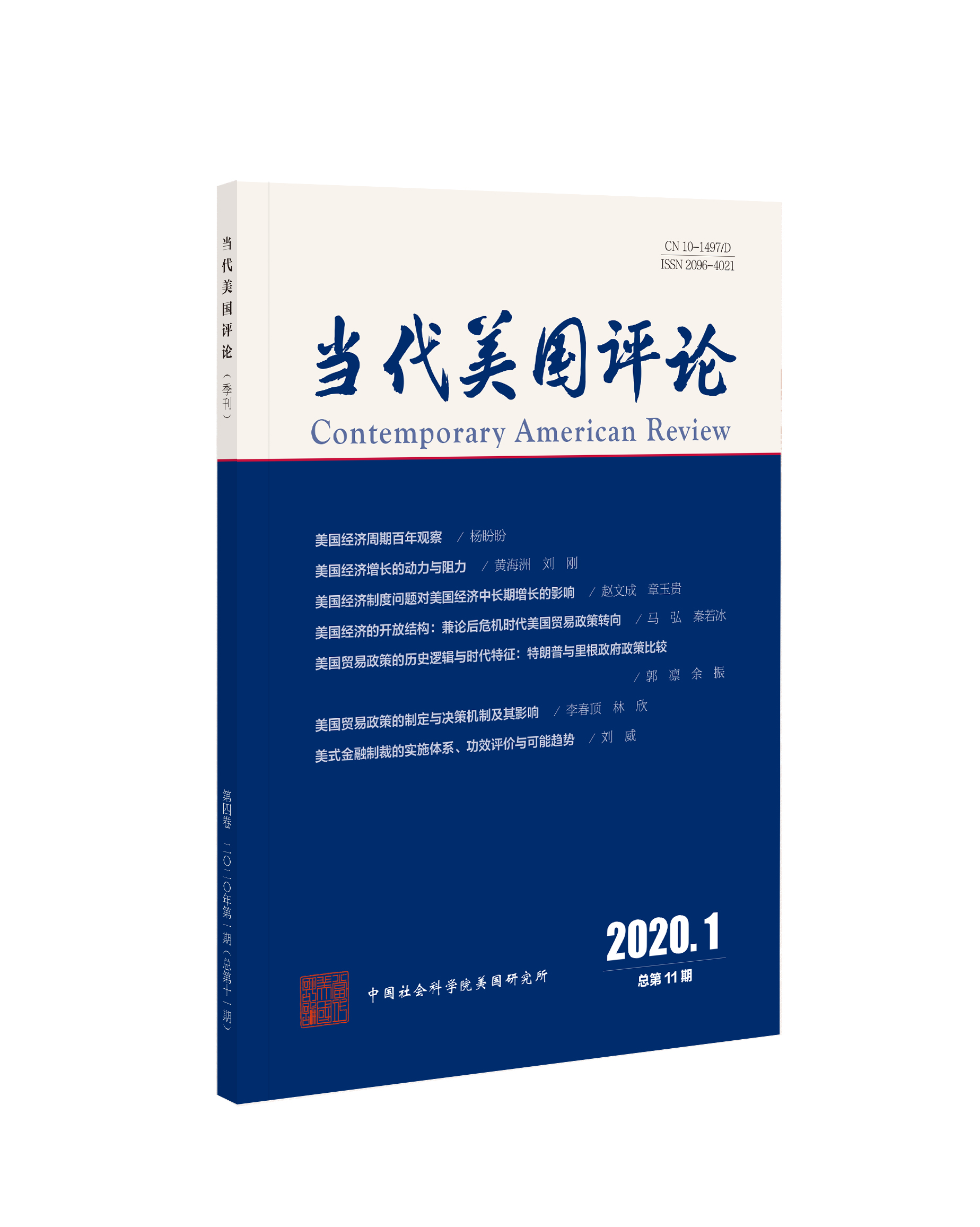最新期刊
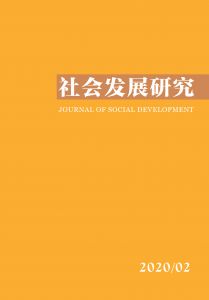
目录
过往期刊
参考文献
-
编委会
-
·马克思主义学习与研究专栏· “疫情治理”笔谈
-
面对病毒的社区治理:举国体制下的基层行动者网络
-
危机治理与议程转换
-
从新冠肺炎疫情防控认识中国国情
-
风险应对视角中的社会治理精细化
-
疫情防控中的村级治理短板:表现形式、形成机制与补齐路径
-
-
·专题研究· 政商关系
-
政治联系、政商关系变迁与民营企业环保投入
-
企业社会责任、体制资本与企业家的政治身份获得
-
-
·专题研究· 社会流动与融合
-
融合策略、歧视感知与农民工幸福感
-
社会融合和归属感对流动人口心理健康的影响研究
-
-
·论文·
-
中国省际信息“流空间”的结构与特征:地域文化力的交互与内卷
-
城市社会冲突的产生逻辑:结构条件、动员机制与互动过程
-
医保供给与政治信任:供给水平与期望增长的速度竞赛
-
跨族群交往的力量
-
制度变迁、角色建构与国家一个人关系的演化逻辑
-
-
英文目录及摘要
-
稿约
-
版权页
按年份浏览:
- 全部
- 2020
- 2019
- 2018
- 2017
- 2016
- 2015
- 2014
[1][1]何雪松、袁园,2017,《全球城市的流动性与社会治理》,《华东师范大学学报》(哲学社会科学版)第6期。
[2][2]何雪松,2016,《情感治理:新媒体时代的重要治理维度》,《探索与争鸣》第11期。
[3][3]张静,2019,《社会治理——组织、观念与方法》,北京:商务印书馆。
[4][4]Latour,B. 2006,Reassembling the Social:An Introduction to Actor-Network Theory ,New York:Oxford University Press.
[5][5]周雪光,2017,《中国国家治理的制度逻辑:一个组织学研究》,北京:生活·读书·新知三联书店。
[6][6]参考消息,2020,《这份重要纪事,公布了》,《参考消息》官微,4月7日(https://mp.weixin.qq.com/s/9bGJin8CEXoRtGpN4WNxSQ)。
[7][7]贺雪峰,2019,《如何应对农村老龄化》,《中国农业大学学报》第3期。
[8][8]黄垚,2020,《回乡记|疫情重灾区是如何进行防疫的》,尚未公开发表。
[9][9]温潇潇、孟津津,2019,《“武汉嫂子‘汉骂’”风波背后的社区保卫战》,《澎湃新闻》,3月2日(https://www.thepaper.cn/newsDetail_forward_6275439)。
[10][10]夏柱智、贺雪峰,2017,《半工半耕与中国渐进城镇化模式》,《中国社会科学》第12期。
[11][11]张赫洋、刘畅,2020,《天津宝坻百货大楼“迷局”破解阻击战紧急打响》,新浪财经综合,2月6日(https://finance.sina.com.cn/china/gncj/2020-02-06/doc-iimxxste9398630.shtml)。
[12][12]央视新闻客户端,2020,《晋江一确诊患者曾参加家族宴会 网传致多人感染 记者实地探访》,央视新闻,2月6日(http://m.news.cctv.com/2020/02/06/ARTINldusiV4ypaSvye8SnFc200206.shtml)。
[13][13]贺雪峰,2020,《武汉疫情防控的几点思考》,《社会学评论》第1期。
[14][14]金成国,2011,《21世纪韩国社会发展模式及国家与市民社会关系的再构成》,《社会科学战线》第2期。
[15][15]雷洪,2020,《治理行动与社会结构——关于武汉防疫战的实时思考》,《社会学评论》第1期。
[16][16]李友梅,2019,《秩序与活力:中国社会变迁的动态平衡》,《探索与争鸣》第6期。
[17][17]乌尔里希·贝克,2003,《风险社会》,何博闻译,南京:译林出版社。
[18][18]乌尔里希·贝克,2004,《世界风险社会》,吴英姿、孙淑敏译,南京:南京大学出版社。
[19][19]习近平,2019,《关于〈中共中央关于坚持和完善中国特色社会主义制度、推进国家治理体系和治理能力现代化若干重大问题的决定〉的说明》,载于《中共中央关于坚持和完善中国特色社会主义制度、推进国家治理体系和治理能力现代化若干重大问题的决定》,北京:人民出版社。
[20][20]向德平,2020,《提升应对重大突发疫情的治理能力——以武汉市为例》,《社会学评论》第1期。
[21][21]郁建兴,2019,《社会治理共同体及其建设路径》,《公共管理评论》第1期。
[22][22]张海东、杜平,2018,《从新社会阶层的崛起看社会治理创新》,《中央社会主义学院学报》第2期。
[23][23]张文显,2020,《新时代中国社会治理的理论、制度和实践创新》,《法商研究》第2期。
[24][24]周雪光,2012,《运动型治理机制:中国国家治理的制度逻辑再思考》,《开放时代》第9期。
[25][25]曹正汉,2006,《从借红帽子到建立党委——温州民营大企业的成长道路及组织结构之演变》,张曙光编《中国制度变迁的案例研究》第五集,北京:中国财政经济出版社。
[26][26]崔先康,2016,《辽宁45名全国人大代表当选无效,有人行贿400多万》,财新网,9月14日(https://new.qq.com/rain/a/20160914020549)。
[27][27]高勇强、何晓斌、李路路,2011,《民营企业家社会身份、经济条件与企业慈善捐赠》,《经济研究》第12期。
[28][28]何轩、马骏,2016,《执政党对私营企业的统合策略及其效应分析:基于中国私营企业调查数据的实证研究》,《社会》第5期。
[29][29]何轩、马骏,2018,《党建也是生产力——民营企业党组织建设的机制与效果研究》,《社会学研究》第3期。
[30][30]洪大用,2013,《关于中国环境问题和生态文明建设的新思考》,《探索与争鸣》第10期。
[31][31]李俊杰,2013,《湖南民企老板自爆花32万贿选后落选,官方介入调查》,中新社,1月30日(news.youth.cn/jsxw/201301/t20130130_2848183.htm)。
[32][32]梁建、陈爽英、盖庆恩,2010,《民营企业的政治参与、治理结构与慈善捐赠》,《管理世界》第7期。
[33][33]刘乐明、何俊志,2013,《谁代表与代表谁?十一届全国人大代表的构成分析》,《中国治理评论》第2期。
[34][34]刘世定,2010,《退“公”进“私”:政府渗透商会的一个分析》,《社会》第1期。
[35][35]龙小宁、杨进,2014,《党组织、工人福利和企业绩效:来自中国民营企业的证据》,《经济学报》第2 期。
[36][36]邬焕庆、丁文杰、陈文广,2014,《(新华视点)“人民代表”神圣称号不容玷污——湖南衡阳破坏选举案警示录》,新华社,8月18日(www.gov.cn/xinwen/2014-08/18/content_2736472.htm)。
[37][37]新华社,2018,《让民营企业吃下定心丸、安心谋发展——四论学习贯彻习近平总书记在民营企业座谈会重要讲话精神》,11月14日(www.xinhuanet.com/2018-11/04/c_1123660779.htm)。
[38][38]杨典,2017,《政商关系与国家治理体系现代化》,《国家行政学院学报》第2期。
[39][39]张建君,2013,《竞争—承诺—服从:中国企业慈善捐款的动机》,《管理世界》第9期。
[40][40]张建君、张志学,2005,《中国民营企业家的政治战略》,《管理世界》第7期。
[41][41]周杰,2016,《习近平:构建“亲”“清”的新型政商关系》,人民网,8月1日(http://theory.people.com.cn/n1/2017/0608/c40531-29327560.html)。
[42][42]周俊胜,2018,《要求私营经济离场代表了一种错误思潮》,新京报,9月12日(http://www.bjnews.com.cn/finance/2018/09/12/504667.html)。
[43][43]朱斌,2015,《自私的慈善家——一家族涉入与企业社会责任行为》,《社会学研究》第2期。
[44][44]Belsley,D.,E. Kuh,& R. Welsch 1980,Regression Diagnostics:Identifying influential Data and Sources of Collinearity . John Wiley & Sons,New Jersey.
[45][45]Bianchi,R. & G. Noci 1998,“‘Greening’ SMEs’ Competitiveness.” Small Business Economics 11(3).
[46][46]Bowen,F. 2002,“Organizational Slack and Corporate Greening:Broadening the Debate.” British Journal of Management 13(4).
[47][47]Chen,M. & D. C. Hambrick 1995,“Speed,Stealth and Selective Attack:How Small Firms Differ from Large Firms in Competitive Behavior.” Academy of Management Journal 38(2).
[48][48]Chen,Z. & Y. Cao 2016,“Chinese Private Corporate Philanthropy:Social Responsibility,Legitimacy Strategy,and the Role of Political Capital.” Chinese Sociological Review 48(2).
[49][49]Dobbin,F.,J. Sutton,J. Meyer,& R. Scott 1993,“Equal Opportunity Law and the Construction of Internal Labor Markets.” American Journal of Sociology 99(2).
[50][50]Dobbin,F.,L. Edelman,J. Meyer,W. Scott,& A. Swidler 1988,“The Expansion of Due Process in Organizations.” In Zucker,L.(eds.),Institutional Patterns and Organizations:Culture and Environment. Cambridge,MA:Ballinger.
[51][51]Du,X. 2015,“Is Corporate Philanthropy Used as Environmental Misconduct Dressing?Evidence from Chinese Family-Owned Firms.” Journal of Business Ethics 129(2).
[52][52]Edelman,L. 1992,“Legal Ambiguity and Symbolic Structures:Organizational Mediation of Civil Rights Law.” American Journal of Sociology 97(6).
[53][53]Freedman,D. 2009,Statistical Models:Theory And Practice ,2nd edition,UK:Cambridge University Press.
[54][54]Haveman,H.,N. Jia,J. Shi,& Y. Wang 2017,“The Dynamics of Political Embeddedness in China.” Administrative Science Quarterly 62(1).
[55][55]Holtbrugge,D. & N. Berg 2004,“How Multinational Corporations Deal with Their Socio-political Stakeholders:An Empirical Study in Asia,Europe,and the US.” Asian Business and Management 3(3).
[56][56]Li,H.,L. Meng,Q. Wang,& L. Zhou 2008,“Political Connections,Financing and Firm Performance:Evidence from Chinese Private Firms.” Journal of Development Economics 87(2).
[57][57]Little,R. & D. Rubin 2002,Statistical Analysis with Missing Data ,2nd edition,Wiley-Interscience,New Jersey,USA.
[58][58]Ma,D. & W. Parish 2006,“Tocquevillian Moments:Charitable Contributions by Chinese Private Entrepreneurs.” Social Forces 85(2).
[59][59]Nee,V. 1996,“The Emergence of a Market Society:Changing Mechanism of Stratification in China.” American Journal of Sociology 101(4).
[60][60]Olli,E. & D. Wollebaek 2001,“Correlates of Environmental Behaviour:Bringing Back Social Context.” Environment and Behavior 33(3).
[61][61]Peng,M. 2003,“Institutional Transitions and Strategic Choices.” Academy of Management Review 28(2).
[62][62]Prechel,H. & L. Zheng 2012,“Corporate Characteristics,Political Embeddedness and Environmental Pollution by Large U.S. Corporations.” Social Forces 90(3).
[63][63]Raghunathan,T. 2004,“What Do We Do With Missing Data?Some Options for Analysis of Incomplete Data.” Annual Review of Public Health 25.
[64][64]Scott,R. 1992,Organizations:Rational,Natural and Open Systems ,3rd edition,Englewood Cliffs,NJ:Prentice Hall.
[65][65]Wickert,C.,A. Scherer,& L. Spence 2016,“Walking and Talking Corporate Social Responsibility:Implications of Firm Size and Organizational Cost.” Journal of Management Studies 53(7).
[66][66]Xin,K. & J. Pearce 1996,“Guanxi:Connections as Substitutes for Formal Institutional Support.” Academy of Management Journal 39(6).
[67][67]蔡宏波、何佳俐,2019,《政治关联与企业环保治污——来自中国私营企业调查的证据》,《北京师范大学学报》(社会科学版)第3期。
[68][68]陈冬华、胡晓莉、梁上坤、新夫,2013,《宗教传统与公司治理》,《经济研究》第9期。
[69][69]陈云松、边燕杰,2015,《饮食社交对政治信任的侵蚀及差异分析:关系资本的“副作用”》,《社会》第1期。
[70][70]戴亦一、潘越、冯舒,2014,《中国企业的慈善捐赠是一种“政治献金”吗?——来自市委书记更替的证据》,《经济研究》第2期。
[71][71]范晓光、吕鹏,2017,《中国私营企业主的社会构成:阶层与同期群差异》,《中国社会科学》第7期。
[72][72]何晓斌,2019,《民营企业家的政治关联类型与企业绩效——基于2014年全国私营企业调查数据的实证检验》,工作论文。
[73][73]贾明、张喆,2010,《高管的政治关联影响公司慈善行为吗?》,《管理世界》第4期。
[74][74]李路路,1996,《社会结构变迁中的私营企业家——论“体制资本”与私营企业的发展》,《社会学研究》第2期。
[75][75]李路路、朱斌,2014,《中国经济改革与民营企业家竞争格局的演变》,《社会发展研究》第1期。
[76][76]李姝、谢晓嫣,2014,《民营企业的社会责任、政治关联与债务融资——来自中国资本市场的经验证据》,《南开管理评论》第6期。
[77][77]李维安、王鹏程、徐业坤,2015,《慈善捐赠、政治关联与债务融资——民营企业与政府的资源交换行为》,《南开管理评论》第1期。
[78][78]林润辉、谢宗晓、李娅、王川川,2015,《政治关联、政府补助与环境信息披露——资源依赖理论视角》,《公共管理学报》第2期。
[79][79]潘红波、夏新平、余明桂,2008,《政府干预、政治关联与地方国有企业并购》,《经济研究》第4期。
[80][80]潘越、戴亦一、李财喜,2009,《政治关联与财务困境公司的政府补助——来自中国ST公司的经验证据》,《南开管理评论》第5期。
[81][81]孙立平,2005,《现代化与社会转型》,北京:北京大学出版社。
[82][82]王艺明、刘一鸣,2018,《慈善捐赠、政治关联与私营企业融资行为》,《财政研究》第6期。
[83][83]吴文锋、吴冲锋、刘晓薇,2008,《中国民营上市公司高管的政府背景与公司价值》,《经济研究》第7期。
[84][84]余明桂、潘红波,2008,《政治关系、制度环境与民营企业银行贷款》,《管理世界》第8期。
[85][85]袁建国、后青松、程晨,2015,《企业政治资源的诅咒效应——基于政治关联与企业技术创新的考察》,《管理世界》第1期。
[86][86]翟学伟,2004,《人情、面子与权力的再生产——情理社会中的社会交换方式》,《社会学研究》第5期。
[87][87]张功富,2011,《政府干预、政治关联与企业非效率投资——基于中国上市公司面板数据的实证研究》,《财经理论与实践》第3期。
[88][88]张建君,2013,《竞争—承诺—服从:中国企业慈善捐款的动机》,《管理世界》第9期。
[89][89]张敏、马黎珺、张雯,2013,《企业慈善捐赠的政企纽带效应——基于我国上市公司的经验证据》,《管理世界》第7期。
[90][90]周怡、胡安宁,2014,《有信仰的资本——温州民营企业主慈善捐赠行为研究》,《社会学研究》第1期。
[91][91]朱斌,2015,《自私的慈善家——家族涉入与企业社会责任行为》,《社会学研究》第2期。
[92][92]Berman,S. L.,A. C. Wicks,S. Kotha & T. M. Jones 1999,“Does Stakeholder Orientation Matter?The Relationship between Stakeholder Management Models and Firm Financial Performance.” Academy of Management Journal 42(5).
[93][93]Carroll,A. B. 1991,“The Pyramid of Corporate Social Responsibility:Toward the Moral Management of Organizational Stakeholders.” Business Horizons 34(4).
[94][94]Donaldson,T. & L. E. Preston 1995,“The Stakeholder Theory of the Corporation:Concepts,Evidence,and Implications.” Academy of Management Review 20(1).
[95][95]Dickson,B. J. 2008,Wealth into Power:The Communist Party’s Embrace of China’s Private Sector. New York:Cambridge University Press.
[96][96]Faccio,M.,R. W. Masulis & J. J. McConnell 2006,“Political Connections and Corporate Bailouts.” The Journal of Finance 61(6).
[97][97]Fisman,R. 2001,“Estimating the Value of Political Connections.” American Economic Review 91(4).
[98][98]Francis,B. B.,I. Hasan & X. Sun 2009,“Political Connections and the Process of Going Public:Evidence from China.” Journal of International Money and Finance 28(4).
[99][99]Godfrey,P.C. 2005,“The Relationship between Corporate Philanthropy and Shareholder Wealth:A Risk Management Perspective.” The Academy of Management Review 30(4).
[100][100]Haley,U. C. 1991,“Corporate Contributions as Managerial Masques:Reframing Corporate Contributions as Strategies to Influence Society.” Journal of Management Studies 28(5).
[101][101]Ma,D. & W. L. Parish 2006,“Tocquevillian Moments:Charitable Contributions by Chinese Private Entrepreneurs.” Social Forces 85(2).
[102][102]Nee,V. 1989,“A Theory of Market Transition:From Redistribution to Markets in State Socialism.” American Sociological Review 54(5).
[103][103]Nee,V. & S. Opper 2010,“Political Capital in a Market Economy.” Social Forces 88(5).
[104][104]Wood,D. J. & R. E. Jones 1995,“Stakeholder Mismatching:A Theoretical Problem in Empirical Research on Corporate Social Performance.” The International Journal of Organizational Analysis 3(3).
[105][105]曹信邦,2008,《就业歧视对农民工社会保障制度构建的消极影响》,《人口与经济》第1期。
[106][106]崔岩,2012,《流动人口心理层面的社会融入和身份认同问题研究》,《社会学研究》第5期。
[107][107]高福海、李平、江雯,2012,《新生代农民工心理状况的调查分析——以武汉经济技术开发区部分企业为例》,《中国青年研究》第1期。
[108][108]郭进、徐盈之、顾紫荆,2018,《户籍歧视与城市移民的幸福感缺失——包含非收入因素的扩展分析》,《山西财经大学学报》第4期。
[109][109]胡伟、王芳、马丽霞、林丹华,2012,《歧视知觉、逆境评价和流动人口心理适应的关系》,《中国临床心理学杂志》第5期。
[110][110]黄家亮,2005,《论社会歧视的社会心理根源及其消除方式——社会心理学视野下的社会歧视》,《思想战线》第5期。
[111][111]黄嘉文,2015,《流动人口主观幸福感及其代际差异》,《华南农业大学学报》(社会科学版)第2期。
[112][112]季永宝、高敬云、杨俊,2016,《流动人口的社会整合程度对其幸福感的影响——以山东省为例》,《城市问题》第7期。
[113][113]李春、宫秀丽,2006,《自我分类理论概述》,《山东师范大学学报》(人文社会科学版)第3期。
[114][114]李路路、石磊,2017,《经济增长与幸福感——解析伊斯特林悖论的形成机制》,《社会学研究》第3期。
[115][115]李强,2004,《社会学的“剥夺”理论与我国农民工问题》,《学术界》第4期。
[116][116]李荣彬、张丽艳,2012,《流动人口身份认同的现状及影响因素研究——基于我国106个城市的调查数据》,《人口与经济》第4期。
[117][117]李升、黄造玉,2017,《流动人口的“被歧视”问题研究——基于一项对北京城中村的调查》,《北京社会科学》第3期。
[118][118]李树茁、任义科、靳小怡、费尔德曼,2008,《中国农民工的社会整合及其影响因素研究——基于社会支持网络的分析》,《人口与经济》第2期。
[119][119]刘靖、毛学峰、熊艳艳,2013,《农民工的权益与幸福感——基于微观数据的实证分析》,《中国农村经济》第8期。
[120][120]刘杨、李泽、林丹华,2013,《歧视与新生代农民工主观幸福感:社会支持与自尊的中介作用》,《中国临床心理学杂志》第6期。
[121][121]卢海阳、杨龙、李宝值,2017,《就业质量、社会认知与农民工幸福感》,《中国农村观察》第3期。
[122][122]王玉龙、彭运石、姚文佳,2014,《农民工收入与主观幸福感的关系:社会支持和人格的作用》,《心理科学》第5期。
[123][123]吴奇峰、苏群、赵霞,2017,《社会资本对农民工主观幸福感的影响》,《湖南农业大学学报》(社会科学版)第6期。
[124][124]杨富平、刘美华,2015,《进城农民工的反歧视意识与反歧视行为——基于浙江省L区的调查与分析》,《中共浙江省委党校学报》第2期。
[125][125]杨菊华,2009,《从隔离、选择融入到融合:流动人口社会融入问题的理论思考》,《人口研究》第1期。
[126][126]张岩、杜岸政、谭顶良、雷婷婷、周炎根,2017,《歧视知觉与流动儿童社会疏离感的关系:一个有调节的中介模型》,《心理发展与教育》第6期。
[127][127]Abu-Rayya,H. M. 2006,“Acculturation and Well-being Among Arab-european Mixed-ethnic Adolescents in Israel.” Adolesc Health 39(5).
[128][128]Berry,J. W. 1997,“Lead Article-Immigration,Acculturation,and Adaptation.” Applied Psychology 46(1).
[129][129]Berry,J. M. 1980,“Acculturation as Varieties of Adaptation.” In A. Padilla(ed.). Acculturation:Theory Model and Some New Finding 9(25).
[130][130]Berry,J. M. 2005,“Acculturation:Living Successfully in Two Cultures.” International Journal of Intercultural Relations 29(6).
[131][131]Berry,J. W. & F. Hou 2016,“Immigrant Acculturation and Well-being in Canada.” Canadian Psychology 57(4).
[132][132]Berry,J. W. & F. Hou 2017,“Acculturation,Discrimination and Well-being among Second Generation of Immigrants in Canada.” International Journal of Intercultural Relations 61(29-39).
[133][133]Camfield,L. & L. Esposito 2014,“A Cross-country Analysis of Perceived Economic Status and Life Satisfaction in High-and Low-income Countries.” World Development 59(3).
[134][134]Cohen,S.,W. J. Doyle,R. B. Turner,C. M. Apler,& D. P. Skoner 2003,“Emotional Style and Susceptibility to the Common Cold.” Psychosomatic Medicine 65(4).
[135][135]David,B. D. & K. Thompson 2005,“Self-Concept and Delinquency:The Effects of Reflected Appraisals by Parent and Peers.” Western Criminology Review 6(1).
[136][136]Easterlin,R. A. 1974,“Does Economic Growth Improve the Human Lot?Some Empirical Evidence.” Nations & Households in Economic Growth .
[137][137]Easterlin,R. A.,R. Morgan,M. Switek,& F. Wang 2012,“China’s Life Satisfaction,1990-2010.” Proceedings of the National Academy of Sciences 109(25).
[138][138]Fang,L.,R. C. F. Sun,& M. Yuen 2017,“Development and Preliminary Validation of An Acculturation Scale for China’s Rural to Urban Migrant Children.” International Journal of Intercultural Relations 58(1-11).
[139][139]Frey,B. S. 2010,“Happiness,Economy and Institutions.” Economic Journal 110(466).
[140][140]Fuller-Iglesias,R. Heather,N. J. Webster,& T. C. Antonucci 2015,“The Complex Nature of Family Support across the Life Span:Implications for Psychological Well-being.” Developmental Psychology 51(3).
[141][141]Gordon,M. M. 1971,“The Nature of Assimilation and the Theory of the Melting Pot.” Current Perspectives in Social Psychology 3.
[142][142]Graham,C.,S. Zhou,& J. Zhang 2017,“Happiness and Health in China:The Paradox of Progress.” World Development 96(231-244).
[143][143]Gui,Y.,J. W. Berry,& Y. Zheng 2012,“Migrant Worker Acculturation in China.” International Journal of Intercultural Relations 36(4).
[144][144]Hener,T.,A. Weller,& R. Shor 1997,“Stages of Acculturation as Reflected by Depression Reduction in Immigrant Nursing Students.” International Journal of Social Psychiatry 43(4).
[145][145]Li,J. & J. W. Raine 2014,“The Time Trend of Life Satisfaction in China.” Social Indicators Research 116(2).
[146][146]Luna,D.,T. Ringberg,& L. Peracchio 2008,“One Individual,Two Identities:Frame Switching among Biculturals.” Journal of Consumer Research 35(2).
[147][147]Mathews,J. 2013,“The Nature and Dynamics of Happiness:A Psychological View.” International Journal of Research in Social Sciences 3(1).
[148][148]Nguyen,A. M. D.,& V. Benet-Martinez 2013,“Biculturalism and Adjustment:A Meta-analysis.” Journal of Cross-Cultural Psychology 44(1).
[149][149]Oishi,S.,S. Kesebir,& E. Diener 2016,“Income Inequality and Happiness.” Psychological Science 22(9).
[150][150]Okulicz-Kozaryn,A. 2013,“City Life:Ranking(Livability)Versus Perceptions(Satisfaction).” Social Indicators Research 110(2).
[151][151]Pascoe,E. A.,& L. S. Richman 2009,“Perceived Discrimination and Health:A Meta-Analytic Review.” Psychological Bulletin 135(4).
[152][152]Potochnick,S.,K. M. Perreira,& A. Fuligni 2012,“Fitting In:The Roles of Social Acceptance and Discrimination in Shaping the Daily Psychological Well-Being of Latino Youth.” Social Science Quarterly 93(1).
[153][153]Schmitt,M. T.,N. R. Branscombe,T. Postmes,& A. Garcia 2014,“The Consequences of Perceived Discrimination for Psychological Well-being:A Meta-analytic Review.” Psychological Bulletin 140(4).
[154][154]Shek,D. T. L. A. 2005,“Longitudinal Study of Chinese Cultural Beliefs About Adversity,Psychological Well-Being,Delinquency and Substance Abuse in Chinese Adolescents with Economic Disadvantage.” Social Indicators Research 71(1/3).
[155][155]Wilson,W. 1967,“Correlates of Avowed Happiness.” Psychological Bulletin 67(4).
[156][156]白薇、张玉静,2016,《流动人口归属感、社会支持对主观幸福感的作用机制研究——以北京市为例》,《科技与管理》第5期。
[157][157]曹谦,2016,《基于结构方程模型的城市流动人口心理健康影响因素分析》,《统计与信息论坛》第31期。
[158][158]程菲、李树茁、悦中山,2015,《文化适应对新老农民工心理健康的影响》,《城市问题》第6期。
[159][159]程菲、李树茁、悦中山,2018,《中国城市劳动者的社会经济地位与心理健康——户籍人口与流动人口的比较研究》,《人口与经济》第6期。
[160][160]甘满堂,2001,《城市农民工与转型期中国社会的三元结构》,《福州大学学报》(哲学社会科学版)第15期。
[161][161]国家卫生和计划生育委员会流动人口司,2014,2014年流动人口动态监测调查技术文件。
[162][162]郝晓宁、孙继艳、薄涛,2018,《社会融合对流动人口心理健康影响的研究——基于2014年全国流动人口动态监测数据的检验》,《人口与发展》第139期。
[163][163]胡荣、陈斯诗,2012,《影响农民工精神健康的社会因素分析》,《社会》第32期。
[164][164]胡荣华、葛明贵,2008,《对408名城市农民工心理健康状况的调查》,《中国卫生事业管理》第25期。
[165][165]蒋善、张璐、王卫红,2007,《重庆市农民工心理健康状况调查》,《心理科学》第30期。
[166][166]李景治、熊光清,2006,《中国城市中农民工群体的社会排斥问题》,《江苏行政学院学报》第6期。
[167][167]李强,2002,《户籍分层与农民工的社会地位》,《中国党政干部论坛》第8期。
[168][168]李强,2004,《农民工与中国社会分层》,北京:社会科学文献出版社。
[169][169]李珊、于戈,2012,《移居老年人的社会关系与心理健康问题研究》,《现代预防医学》第39期。
[170][170]梁波、王海英,2010,《国外移民社会融入研究综述》,《甘肃行政学院学报》第2期。
[171][171]刘亮、高汉、章元,2018,《流动人口心理健康及影响因素——基于社区融合视角》,《复旦学报》(社会科学版)第60期。
[172][172]刘颂,2007,《老年社会参与对心理健康影响探析》,《人口与社会》第23期。
[173][173]牛喜霞,2007,《社会资本在农民工流动中的负面作用探析》,《求实》第8期。
[174][174]祁静、郑笑,2018,《健康对流动人口城市居留意愿的影响研究——基于2014年全国流动人口社会融合与心理健康专项数据的分析》,《调研世界》第4期。
[175][175]任远、乔楠,2010,《城市流动人口社会融合的过程、测量及影响因素》,《人口研究》第34期。
[176][176]任远、邬民乐,2006,《城市流动人口的社会融合:文献述评》,《人口研究》第30期。
[177][177]王毅杰、童星,2004,《流动农民社会支持网探析》,《社会学研究》第2期。
[178][178]肖敏慧、王邃遂、彭浩然,2019,《迁移压力、社会资本与流动人口心理健康——基于压力过程理论的研究》,《当代财经》第3期。
[179][179]闫凤武,2011,《齐齐哈尔市新生代农民工心理健康状况调查》,《中国健康心理学杂志》第19期。
[180][180]颜咏华、郭志仪,2015,《多维视角下甘肃省城市流动人口社会融合研究》,《人口与发展》第21期。
[181][181]杨金东、胡荣,2016,《社会资本与城乡居民的心理健康》,《云南社会科学》第1期。
[182][182]杨菊华,2009,《从隔离、选择融入到融合:流动人口社会融入问题的理论思考》,《人口研究》第33期。
[183][183]杨菊华,2010,《流动人口在流入地社会融入的指标体系——基于社会融入理论的进一步研究》,《人口与经济》第2期。
[184][184]叶裕民、黄壬侠,2004,《中国流动人口特征与城市化政策研究》,《中国人民大学学报》第18期。
[185][185]余运江、高向东、郭庆,2012,《新生代乡-城流动人口社会融合研究——基于上海的调查分析》,《人口与经济》第1期。
[186][186]悦中山,2011,《农民工的社会融合研究:现状、影响因素与后果》,西安交通大学博士学位论文。
[187][187]张冲、张丹,2016,《城市老年人社会活动参与对其健康的影响——基于CHARLS 2011年数据》,《人口与经济》第5期。
[188][188]张文宏、雷开春,2008,《城市新移民社会融合的结构、现状与影响因素分析》,《社会学研究》第5期。
[189][189]张忠朝、仇雨临,2015,《我国城乡困难家庭心理健康与社会参与状况研究》,《调研世界》第5期。
[190][190]章芳、李祚山、卢淋淋、王思阳,2011,《重庆市农民工心理健康状况的调查研究》,《中国卫生事业管理》第28期。
[191][191]赵英淑、杨磊,2011,《流动儿童社会支持与心理健康:学校归属感的中介作用》,《青岛职业技术学院学报》第24期。
[192][192]中华人民共和国国家统计局,2020,《中华人民共和国2019年国民经济和社会发展统计公报》。
[193][193]仲亚琴、高月霞、李百胜,2016,《基于社会资本理论的农村老年人心理健康问题》,《中国老年学》第36期。
[194][194]周皓,2012,《流动人口社会融合的测量及理论思考》,《人口研究》第36期。
[195][195]朱海琳、白薇、陈建成、张玉静,2015,《流动人口城市归属感与主观幸福感的关系研究——基于北京市流动人口的调查数据》,《河北科技大学学报》(社会科学版)第15期。
[196][196]朱力,2002,《论农民工阶层的城市适应》,《江海学刊》第6期。
[197][197]Andrews III,A. R.,A. J.,Bridges,& D.,Gomez 2013,“A Multi-Study Analysis of Conceptual and Measurement Issues Related to Health Research on Acculturation In Latinos.” Journal of Transcultural Nursing 24(2).
[198][198]Berkman,L. F.,T.,Glass,I.,Brissette,& T. E.,Seeman 2000,“From Social Integration to Health:Durkheim in the New Millennium.” Social Science & Medicine 51(6).
[199][199]Berry,J. W. 1980,“Social and Cultural Change.” African Studies Review 17(2).
[200][200]Berry,J. W.,U.,Kim,T.,Minde,& D.,Mok 1987,“Comparative Studies of Acculturative Stress.” International Migration Review 21(3).
[201][201]Chen,W.,L.,Ling,& A. M.,Renzaho 2017,“Building a New Life in Australia:An Analysis of the First Wave of the Longitudinal Study of Humanitarian Migrants in Australia to Assess the Association between Social Integration And Self-Rated Health.” BMJ Open 7(3).
[202][202]Durkheim,E. 1952,Suicide:a Study in Sociology ,Abingdo:Routledge Press.
[203][203]Eide,A. H.,& E.,Røysamb 2002. “The Relationship between Level of Disability,Psychological Problems,Social Activity,and Social Networks.” Rehabilitation Psychology 47(2).
[204][204]Gordon,M. M. 1964. Assimilation in American Life ,Oxfordshire:Oxford University Press.
[205][205]Gui,Y.,J. W.,Berry,& Y.,Zheng 2012. “Migrant Worker Acculturation in China.” International Journal of Intercultural Relations 36(4).
[206][206]Hagerty,B. M.,J.,Lynch-Sauer,K. L.,Patusky,M.,Bouwsema,& P.,Collier 1992. “Sense of Belonging:A Vital Mental Health Concept.” Archives of Psychiatric Nursing 6(3).
[207][207]Hancock,G. R. 2003,“Fortune Cookies,Measurement Error,and Experimental Design.” Journal of Modern Applied Statistical Methods 2(2).
[208][208]Huang,X.,Y.,Liu,D.,Xue,Z.,Li,& Z.,Shi 2018,“The Effects of Social Ties on Rural-Urban Migrants’ Intention to Settle in Cities In China.” Cities 83(31).
[209][209]Jin,L.,M.,Wen,J. X.,Fan,& G.,Wang 2012,“Trans-Local Ties,Local Ties and Psychological Well-Being among Rural-To-Urban Migrants in Shanghai.” Social Science & Medicine 75(2).
[210][210]Junger-Tas,J. 2001,“Ethnic Minorities,Social Integration and Crime.” European Journal on Criminal Policy and Research 9(1).
[211][211]Kawachi,I.,& L.,Berkman 2001,“Social Ties and Mental Health.” Journal of Urban Health 78(3).
[212][212]Kessler,R. C.,J. G.,Green,M. J.,Gruber,N. A.,Sampson,E.,Bromet,M.,Cuitan,& C. Y.,Hu 2010,“Screening for Serious Mental Illness in the General Population with the K6 Screening Scale:Results from the WHO World Mental Health(WMH)Survey Initiative.” International Journal of Methods in Psychiatric Research 19(Suppl 1).
[213][213]Lin,Y.,Q.,Zhang,W.,Chen,J.,Shi,S.,Han,X.,Song,& L.,Ling 2016,“Association Between Social Integration and Health among Internal Migrants in Zhongshan,China.” Plos One 11(2).
[214][214]Ling,N.D. H. 2016,“Psychological Pathways from Social Integration to Health:An Examination of Different Demographic Groups in Canada.” Social Science & Medicine 151.
[215][215]Rose,T.,S.,Joe,J.,Shields,& C. H.,Caldwell 2014,“Social Integration and the Mental Health of Black Adolescents.” Child Development 85(3).
[216][216]Seeman,T. E. 1996,“Social Ties and Health:The Benefits of Social Integration.” Annals of Epidemiology 6(5).
[217][217]Stansfeld,S. 2002,“Social Support Measurement and Intervention:A Guide for Health and Social Scientists.” International Journal of Epidemiology 31(3).
[218][218]Thoits,P. A. 2011,“Mechanisms Linking Social Ties and Support to Physical and Mental Health.” J Health Soc Behav 52(2).
[219][219]Zagefka,H.,& R.,Brown 2002,“The Relationship between Acculturation Strategies,Relative Fit and Intergroup Relations:Immigrant-Majority Relations in Germany.” European Journal of Social Psychology 32(2).
[220][220]白欲晓,2011,《“地域文化”内涵及划分标准探析》,《江苏社会科学》第1期。
[221][221]曹有挥、陈国伟,2014,《基于生产性服务业的长江三角洲城市网络》,《地理研究》第2期。
[222][222]陈涛、林杰,2013,《基于搜索引擎关注度的网络舆情时空演化比较分析——以谷歌趋势和百度指数比较为例》,《情报杂志》第3期。
[223][223]陈云松、吴青熹、黄超,2015,《大数据何以重构社会科学》,《新疆师范大学学报》(哲学社会科学版)第3期。
[224][224]陈云松、朱灿然、张亮亮,2017,《代内“文化反授”:概念、理论和大数据实证》,《社会学研究》第1期。
[225][225]陈映雪、甄峰、王波、邹伟,2013,《基于社会网络分析的中国城市网络信息空间结构》,《经济地理》第4期。
[226][226]顾朝林,2011,《城市群研究进展与展望》,《地理研究》第5期。
[227][227]蒋大亮、孙烨、任航、陈影影、张振克,2015,《基于百度指数的长江中游城市群城市网络特征研究》,《长江流域资源与环境》第10期。
[228][228]金钟范,2010,《基于企业母子联系的中国跨国城市网络结构——以中韩城市之间联系为例》,《地理研究》第9期。
[229][229]梁辉,2008,《我国省际信息流动规模测算与空间结构分析》,《经济问题》第12期。
[230][230]李敬、陈澍、万广华、付陈梅,2014,《中国区域经济增长的空间关联及其解释——基于网络分析方法》,《经济研究》第11期。
[231][231]路旭、马学广、李贵才,2012,《基于国际高级生产者服务业布局的珠三角城市网络空间格局研究》,《经济地理》第4期。
[232][232]孙中伟、路紫,2005,《流空间基本性质的地理学透视》,《地理与地理信息科学》第1期。
[233][233]谭一洺、杨永春、冷炳荣等,2011,《基于高级生产者服务业视角的成渝地区城市网络体》,《地理科学进展》第6期。
[234][234]王桂新,1993,《我国省际人口迁移与距离关系之探讨》,《人口与经济》第2期。
[235][235]汪明峰、宁越敏,2004,《互联网与中国信息网络城市的崛起》,《地理学报》第3期。
[236][236]汪明峰,2006,《城市的网络优势——中国互联网骨干网络结构与节点可达性分析》,《地理研究》第2期。
[237][237]武前波、宁越敏,2012,《中国城市空间网络分析——基于电子信息企业生产网络视角》,《地理研究》第2期。
[238][238]吴威、曹有挥、梁双波等,2009,《中国铁路客运网络可达性空间格局》,《地理研究》第5期。
[239][239]熊丽芳、甄峰、王波、席广亮,2013,《基于百度指数的长三角核心区城市网络特征研究》,《经济地理》第7期。
[240][240]熊丽芳、甄峰、席广亮、朱晓清、王波等,2014,《我国三大经济区城市网络变化特征——基于百度信息流的实证研究》,《热带地理》第1期。
[241][241]闫庆武,卞正富,2015,《基于GIS的中国省际人口迁移流的空间特征分析》,《人文地理》第3期。
[242][242]尹俊、甄峰、王春慧,2011,《基于金融企业布局的中国城市网络格局研究》,《经济地理》第5期。
[243][243]于文丽,蒲英霞,陈刚、王洁臣民,2012,《基于空间自相关的中国省际人口迁移模式与机制分析》,《地理与地理信息科学》第2期。
[244][244]于欣洺、吴相利,2015,《基于百度指数的东北地区城市网络特征研究》,《哈尔滨师范大学自然科学学报》第6期。
[245][245]甄峰、王波、陈映雪,2012,《基于网络社会空间的中国城市网络特征——以新浪微博为例》,《地理学报》第8期。
[246][246]张闯、孟韬,2007,《中国城市间流通网络及其层级结构——基于中国连锁企业百强店铺分布的网络分析》,《财经问题研究》第5期。
[247][247]Alderson,A. S. & J. Beckfield 2004,“Power and Position in the World City System.” American Journal of Sociology 109(4).
[248][248]Arellano,M. & S. Bond 1991,“Some Tests of Specification for Panel Data:Monte Carlo Evidence and an Application to Employment Equations.” Review of Economic Studies 58(2).
[249][249]Arellano,M. & O. Bover 1995,“Another Look at the Instrumental Variable Estimation of Error-components Models.” Journal of Econometrics 68(1).
[250][250]Beaverstock,J.V. 2007,“World City Networks from Below:International Mobility and Inter-city Relations in the Global Investment Banking Industry.” In Cities in Globalization:Practices,Policies,Theories ,edited by Peter Taylor,Ben Derudder,Peter Saey,Frank Witlox. London and New York:Routledge.
[251][251]Blundell,R. & S. Bond 1998,“GMM Estimation with Persistent Panel Data:An Application to Production Functions.” Journal of Econometrics 19(3).
[252][252]Bond,S. 2002,“Dynamic Panel Models:A Guide to Micro Data Methods and Practice.” Portuguese Economic Journal 1(2).
[253][253]Bryden,J.,S. Funk & V. A. Jansen 2013,“Word Usage Mirrors Community Structure in the Online Social Network Twitter.” Epj Data Science 2(1).
[254][254]Castells,M. 1996,The Rise of the Network Society (Volumn 1). Malden,MA:Blackwell.
[255][255]Castells,M. 2010,“Globalisation,Networking,Urbanisation:Reflections on the Spatial Dynamics of the Information Age.” Urban Studies 47(13).
[256][256]Chen,Y.,F. Yan & Y. Zhang 2016,“Local Name,Global Fame:The International Visibility of Chinese Cities in Modern Time.” Urban Studies 54(11).
[257][257]Choi,J. H.,G. A. Barnett & B. S. Chon 2006,“Comparing World City Networks:A Network Analysis of Internet Backbone and Air Transport Intercity Linkages.” Global Networks 6(1).
[258][258]Curme,C.,T. Preis,H. E. Stanley & H. S. Moat 2014,“Quantifying the Semantics of Search Behavior before Stock Market Moves.” Proceedings of National Academy of Science 111(32).
[259][259]Derudder,B. 2006,“On Conceptual Confusion in Empirical Analyses of a Transnational Urban Network.” Urban Studies 43(11).
[260][260]Griliches,Z. & J. A. Hausman 1984,“Errors in Variables in Panel Data.” Journal of Econometrics 31(1).
[261][261]Geoffrey,H. P. & P. Kathy 2006,The Polycentric Metropolis:Learning from Mega-city Regions in Europe . London and New York:Routledge.
[262][262]Hall,Peter & K. Pain 2006,The Polycentric Metropolis:Learning from Mega-City Regions in Europe . London,Earthscan Publications Ltd.
[263][263]Holtz-Eakin,D.,W. Newey & H. S. Rosen 1988,“Estimating Vector Autoregressions with Panel Data.” Econometrica 56(6).
[264][264]Mahutga,M. C.,X. Ma,D. A. Smith & M. Timberlak 2010,“Economic Globalisation and the Structure of the World City System:the Case of Airline Passenger Data.” Urban Studies 47(9).
[265][265]Malecki,E. J. 2002,“The Economic Geography of the Internet’s Infrastructure.” Economic Geography 78(4).
[266][266]Matsumoto,H. 2004,“International Urban Systems and Air Passenger and Cargo Flows:Some Calculations.” Journal of Air Transport Management 10(4).
[267][267]Mellon,J. 2014,“Internet Search Data and Issue Salience:The Properties of Google Trends as a Measure of Issue Salience.” Journal of Elections Public Opinion & Parties 24(1).
[268][268]Nuti,S. V.,B. Wayda,I. Ranasinghe et al. 2014,“The Use of Google Trends in Health Care Research:A Systematic Review.” Plos One 9(10).
[269][269]Robinson,Jennifer 2005,“Urban Geography:World Cities,or A World of Cities.” Progress in Human Geography 29(6).
[270][270]Scheitle,C. P. 2011,“Google’s Insights for Search:A Note Evaluating the Use of Search Engine Data in Social Research.” Social Science Quarterly 92(1).
[271][271]Smith,D. A.,Timberlake Michael 1995,“Cities in Global Matrices:Toward Mapping the World-system’s City System.” World Cities in a World-system .
[272][272]Taylor,P. J. 2001,“Specification of the World City Network.” Geographical Analysis 33(2).
[273][273]Taylor,P. J. & B. Derudder,2004,World City Network:A Global Urban Analysis. London and New York:Routledge.
[274][274]Townsend,A. M. 2001,“Network Cities and the Global Structure of the Internet.” American Behavioral Scientist 44(10).
[275][275]Womack,B. 2001,“China’s Border Trade and its Relationship to the National Political Economy.” American Asian Review 19(2).
[276][276]卜长莉,2009,《当前中国城市社区矛盾冲突的新特点》,《河北学刊》第1期。
[277][277]卜玉梅、周志家,2016,《政治机会、话语机会与抗争空间的生产》,《社会发展研究》第1期。
[278][278]陈鹏,2010,《当代中国城市业主的法权抗争——关于业主维权活动的一个分析框架》,《社会学研究》第1期。
[279][279]陈映芳,2006,《行动力与制度限制:都市运动中的中产阶层》,《社会学研究》第4期。
[280][280]陈映芳,2010,《行动者的道德资源动员与中国社会兴起的逻辑》,《社会学研究》第4期。
[281][281]蒂利,查尔斯,2008,《身份、边界与社会联系》,谢岳译,上海:上海世纪出版集团。
[282][282]冯仕政,2006,《单位分割与集体抗争》,《社会学研究》第3期。
[283][283]冯仕政,2007,《沉默的大多数:差序格局与环境抗争》,《中国人民大学学报》第1期。
[284][284]高恩新,2014,《集体维权行动暴力化的转型逻辑:基于扎根理论的分析》,《社会发展研究》第1期。
[285][285]郭于华、沈原,2012,《居住的政治——B市业主维权与社区建设的实证研究》,《开放时代》第2期。
[286][286]黄冬娅,2013,《人们如何卷入公共参与事件——基于广州市恩宁路改造中公民行动的分析》,《社会》第3期。
[287][287]黄荣贵,2012,《作为动员结构的网络:社会网络、虚拟网络与抗争动员》,陈周旺、刘春荣主编,《复旦政治学评论:集体行动的中国逻辑》,上海:上海人民出版社。
[288][288]黄荣贵、郑雯、桂勇,2015,《多渠道强干预、框架与抗争结果》,《社会学研究》第5期。
[289][289]黄卫平、陈家喜,2008,《城市运动中的地方政府与社会——基于N区业主维权案例的分析》,《东南学术》第6期。
[290][290]黄晓星,2011,《社区运动的“社区性”——对现行社区运动理论的回应与补充》,《社会学研究》第1期。
[291][291]黄晓星,2012,《“上下分合轨迹”:社区空间的生产——关于南苑肿瘤医院的抗争故事》,《社会学研究》第1期。
[292][292]李培林,2005,《社会冲突与阶级矛盾:当代中国社会矛盾研究》,《社会》第1期。
[293][293]李培林、陈光金、张翼、李炜,2013,《当代中国和谐稳定》,北京:社会科学文献出版社。
[294][294]李培林、陈光金、王春光,2020,《社会蓝皮书:2020年中国社会形势分析与预测》,北京:社会科学文献出版社。
[295][295]刘德海,2010,《群体性突发事件中政府机会主义行为的演化博弈分析》,《中国管理科学》第1期。
[296][296]刘能,2004,《怨恨解释、动员结构和理性选择:有关中国都市地区集体行动发生可能性的分析》,《开放时代》第4期。
[297][297]刘能,2008,《当代中国群体性集体行动的几点理论思考——建立在经验案例之上的观察》,《开放时代》第3期。
[298][298]孟伟,2005,《建构公民政治:业主集体行动策略及其逻辑》,《华中师范大学学报》(人文社会科学版)第3期。
[299][299]潘永强,2012,《邻避政治的成因与管理:以A市垃圾焚烧厂为例》,陈周旺、刘春荣主编,《复旦政治学评论:集体行动的中国逻辑》,上海:上海人民出版社。
[300][300]渠敬东,2019,《迈向社会全体的个案研究》,《社会》第1期。
[301][301]盛智明,2016,《组织动员、行动策略与机会结构:业主集体行动结果的影响因素分析》,《社会》第3期。
[302][302]石发勇,2005,《关系网络与当代中国基层社会运动——以一个街区环保运动个案为例》,《学海》第3期。
[303][303]施芸卿,2007,《机会空间的营造:以B市被拆迁居民集团行政诉讼为例》,《社会学研究》第2期。
[304][304]特纳,乔纳森,2001,《社会学理论的结构(上)》,邱泽奇等译,北京:华夏出版社。
[305][305]王小章、冯婷,2014,《集体主义时代和个体化时代的集体行动》,《山东社会科学》第5期。
[306][306]谢颖、林芬,2016,《抗争性政治中的群体差异与资源借用》,《社会学评论》第1期。
[307][307]应星,2001,《大河移民上访的故事》,北京:三联出版社。
[308][308]于建嵘,2008,《中国的社会泄愤事件与管治困境》,《当代世界与社会主义》第1期。
[309][309]俞志元,2012,《集体性抗争行动结果的影响因素》,《社会学研究》第3期。
[310][310]张紧根、庄文嘉,2008,《非正式政治:一个草根NGO的行动策略》,《社会学研究》第2期。
[311][311]张磊,2005,《业主维权运动:产生原因及动员机制》,《社会学研究》第6期。
[312][312]张永宏、李静君,2012,《制造同意——基层政府怎样吸纳民众的抗争》,《开放时代》第9期。
[313][313]赵鼎新,2006,《社会与政治运动讲义》,北京:社会科学文献出版社。
[314][314]周雪光,2015,《无组织的利益与集体行动》,《社会发展研究》第1期。
[315][315]庄文嘉,2011,《跨越国家赋予的权利?对广州市业主抗争的个案研究》,《社会》第3期。
[316][316]Cai,Yongshun 2010,Collective Resistance in China:Why Popular Protests Succeed or Fail . Stanford,CA:Stanford University Press.
[317][317]Coser,L. 1967,Continuities in the Study of Social Conflict . New York:Free Press.
[318][318]Dahrendorf,Ralf 1959,Class and Class Conflict in Industrial Society . Stanford,California:Stanford University Press.
[319][319]Gould,Roger 1991,“Multiple Networks and Mobilization in the Paris Commune,1871.” American Sociological Review 56.
[320][320]Huang,Ronggui & Xiaoyi Sun 2016,“Dynamic Preference Revelation and Expression of Personal Frames:How Weibo Is Used in An Anti-nuclear Protest in China.” Chinese Journal of Communication 9(4).
[321][321]Huang,Ronggui & Xiaoyi Sun 2019,“Dual Mediation and Success of Environmental Protests in China:A Qualitative Comparative Analysis of 10 Cases.” Social Movement Studies . DOI:10.1080/14742837.2019.1682539.
[322][322]Lee,Ching Kwan 2007,“Is Labor a Political Force in China?” In Elizabeth Perry & Merle Goldman(eds.),Grassroots Political Reform in Contemporary China ,Cambridge:Harvard University Press.
[323][323]Lee,Ching Kwan & Yonghong Zhang 2013,“The Power of Instability:Unraveling the Microfoundations of Bargained Authoritarianism in China.” American Journal of Sociology 118(6).
[324][324]Li,Yanwei 2017,“Governing Environmental Conflicts in China:Lessons Learned from the Case of the Liulitun Waste Incineration Power Plant in Beijing.” Public Policy and Administration ,DOI:10.1177/0952076717709521.
[325][325]McAdam,Doug 1982,Political Process and the Development of Black Insurgency,1930-1970. Chicago:University of Chicago Press.
[326][326]McCarthy,John D. & Mayer N. Zald 1973,The Trend of Social Movements in America:Professionalization and Resource Mobilization . Morristown,N.J.:General Learning Corporation.
[327][327]McCarthy,John D. & Mayer N. Zald 1977,“Resource Mobilization and Social Movements:A Partial Theory.” American Journal of Sociology 82.
[328][328]O’Brien,Kevin J. & Lianjiang Li 2004,“Suing the Local State:Administrative Litigation in Rural China.” The China Journal 51.
[329][329]O’Brien,Kevin J. & Lianjiang Li 2006,Rightful Resistance in Rural China . New York:Cambridge University Press.
[330][330]Snow,David A.,Zurcher,Louis A. J. & Ekland-Olsen,S. 1980,“Social Networks and Social Movements:A Microstructural Approach to Differential Recruitment.” American Sociological Review 45.
[331][331]Shi,Fayong & Cai,Yongshun 2006,“Disaggregating the State:Networks and Collective Resistance in Shanghai.” The China Quarterly 186.
[332][332]Smelser,Neil J. 1962,Theory of Collective Behavior . New York:The Free Press of Glencoe.
[333][333]Sun,Xiaoyi,Ronggui Huang & Ngai-Ming Yip 2017,“Dynamic Political Opportunities and Environmental Forces Linking Up:A Case Study of Anti-PX Contention in Kunming.” Journal of Contemporary China ,Doi:10.1080/10670564.2017.1274818.
[334][334]Sun,Xiaoyi & Ronggui Huang 2018,“Spatial Meaning-making and Urban Activism:Two Tales of Anti-PX Protests in Urban China.” Journal of Urban Affairs . Doi:10.1080/07352166.2018.1443010.
[335][335]Tarrow,Sidney G. 1988,“National Politics and Collective Action:Recent Theory and Research in Western Europe and the United States.” Annual Review of Sociology 14(1).
[336][336]Tarrow,Sidney G. 1996,“Review:Social Movements in Contentious Politics:A Review Article.” American Political Science Review 90(4).
[337][337]Tilly,Charles 1978,From Mobilization to Revolution . New York:Random Press.
[338][338]Tilly,Charles 1984,“Social Movement and National Politics.” In Charles Bright & Susan Harding(eds.),State-making and Social Movement ,Ann Arbor,MI:University of Michigan Press.
[339][339]Tomba,Luigi 2005,“Residential Space and Collective Interest Formation in Beijing’s Housing Disputes.” The China Quarterly 184.
[340][340]Wagner-Pacifici,Robin & Meredith Hall 2013,“Resolution of Social Conflict.” The Annual Review of Sociology 38.
[341][341]Yang,Yunkang 2016,“How Large-scale Protests Succeed in China:The Story of Issue Opportunity Structure,Social Media,and Violence.” International Journal of Communication 10.
[342][342]Zhao,Dingxin 1998,“Ecologies of Social Movements:Student Mobilization during the 1989 Prodemocracy Movement in Beijing.” American Journal of Sociology 103.
[343][343]Zhou,Xueguang 1993,“Unorganized Interests and Collective Action in Communist China.” American Sociological Review 58(1).
[344][344]葛天任、孟天广,2016,《社会公平性产品更能增进政府信任吗?——基于北京、首尔和东京的实证分析》,《社会发展研究》第2期。
[345][345]郭凤林、严洁,2019,《福利供给中的社会稳定风险因素考量——基于地区城镇居民医保筹资水平差异的研究》,《东北大学学报》(社会科学版)第5期。
[346][346]亨廷顿,1998,《第三波:20世纪后期的民主化浪潮》,刘军宁译,上海:上海三联书店。
[347][347]胡荣、胡康、温莹莹,2011,《社会资本、政府绩效与城市居民对政府的信任》,《社会学研究》第1期。
[348][348]黄薇,2017,《医保政策精准扶贫效果研究——基于URBMI试点评估入户调查数据》,《经济研究》第9期。
[349][349]姜晓秋、陈德权,2006,《公共管理视角下政府信任及其理论探究》,《社会科学辑刊》第4期。
[350][350]刘军强、刘凯、曾益,2015,《医疗费用持续增长机制——基于历史数据和田野资料的分析》,《中国社会科学》第8期。
[351][351]罗爱武,2016,《政治参与和治理绩效对政治信任的影响——基于广东、湖北和贵州三省的实证分析》,《探索》第5期。
[352][352]马超、顾海、孙徐辉,2015,《参合更高档次的医疗保险能促进健康吗?——来自城乡医保统筹自然实验的证据》,《公共管理学报》第2期。
[353][353]孟天广,2014,《转型期的中国政治信任:实证测量与全貌概览》,《华中师范大学学报》(人文社会科学版)第2期。
[354][354]孟天广、杨明,2012,《转型期中国县级政府的客观治理绩效与政治信任》,《经济社会体制比较》第4期。
[355][355]彭华民,2011,《中国组合式普惠型社会福利制度的构建》,《学术月刊》第10期。
[356][356]彭华民,2012,《中国政府社会福利责任:理论范式演变与制度转型创新》,《天津社会科学》第6期。
[357][357]王磊,2012,《福利需求与满足:一个文献综述》,《生产力研究》第10期。
[358][358]王绍光,2013,《中国仍然是低福利国家吗?——比较视角下的中国社会保护“新跃进”》,《人民论坛》第22期。
[359][359]肖唐镖、赵宏月,2019,《政治信任的品质对象究竟是什么?——我国民众政治信任的内在结构分析》,《政治学研究》第2期。
[360][360]熊跃根,2011,《社会政策的比较研究:概念、方法及其应用》,《经济社会体制比较》第3期。
[361][361]熊跃根,2015,《作为社会治理的社会政策实施:技术理性与政治实践的结合》,《江海学刊》第4期。
[362][362]徐强,2012,《基本医疗保险制度的公众满意度及影响因素——基于全国4个省份1600余份问卷的实证研究》,《保险研究》第12期。
[363][363]姚进忠,2019,《福利治理中的需要理论:内涵、类型与满足路径》,《学习与实践》第2期。
[364][364]游宇、张光,2015,《事与愿违:财政支出导向与政治信任》,《开放时代》第1期。
[365][365]臧文斌、刘国恩、徐菲、熊先军,2012,《中国城镇居民基本医疗保险对家庭消费的影响》,《经济研究》第7期。
[366][366]张熹珂、董丽君,2019,《公共政策效果感知与公民的政府信任——基于杭州市公共自行车政策的实证分析》,《中共杭州市委党校学报》第5期。
[367][367]张五常,2008,《社会福利主义中看不中用》,《经营管理者》第1期。
[368][368]郑建君,2019,《政治效能感、参与意愿对中国公民选举参与的影响机制——政治信任的调节作用》,《华中师范大学学报》(人文社会科学版)第4期。
[369][369]赛奇,托尼,2012,《中国社会福利政策:迈向社会公民权》,周凤华译,《华中师范大学学报》(人文社会科学版)第4期。
[370][370]Barnes,C. & D. Gill 2000,“Declining Government Performance?Why Citizens don’t Trust Government.” New Zealand State Services Commission Working Paper Series 9.
[371][371]Bianco,W. T. 1994,Trust:Representatives and Constituents . MI.:University of Michigan Press.
[372][372]Braithwait,V. & Levi,M. 1998,Trust and Governance . New York:Russell Sage Foundation.
[373][373]Brambor,T.,W. R. Clark & M. Golder 2006,“Understanding Interaction Models:Improving Empirical Analyses.” Political Analysis 84(1).
[374][374]Buchanan,J. 1962,The Calculus of Consent:Logical Foundation of Constitutional Democracy ,MI.:Michigan University Press.
[375][375]Carnes,M. E.,& I. Mares 2007,“The Welfare State in Global Perspective.” In Carles Boix & Susan C. Stokes(eds.),The Oxford Handbook of Comparative Politics ,New York:Oxford University Press.
[376][376]Chen,J.,J. Pan & Y. Xu 2015,“Sources of Authoritarian Responsiveness:A Field Experiment in China.” American Journal of Political Science 60(2).
[377][377]Easton,D. 1965,A Systems Analysis of Political Life . New York:Wiley.
[378][378]Feldman,S. 1982,“Economic Self-Interest and Political Behavior.” American Journal of Political Science 26(3).
[379][379]Gao,Q.,S. Yang & S. Li 2013,“The Chinese Welfare State in Transition:1988-2007.” Journal of Social Policy 42(4).
[380][380]Hainmueller,J.,J. Mummolo & Y. Xu 2019,“How Much Should We Trust Estimates from Multiplicative Interaction Models?Simple Tools to Improve Empirical Practice.” Political Analysis 27(2).
[381][381]Holliday,I. 2000,“Productivist Welfare Capitalism:Social Policy in East Asia.” Political Studies 48(4).
[382][382]Kim,S. 2010,“Public Trust in Government in Japan and South Korea:Does the Rise of Critical Citizens Matter?” Public Administration Review 70(5).
[383][383]Kumlin,S. 2009,“Blaming Europe?Exploring the Variable Impact of National Public Service Dissatisfaction on EU Trust.” Journal of European Social Policy 19(5).
[384][384]Kwon,H. J. 1997,“Beyond European Welfare Regimes:Comparative Perspectives on East Asian Welfare Systems.” Journal of Social Policy 26(4).
[385][385]Landry,P. F. & M. Shen 2005,“Reaching Migrants in Survey Research:The Use of the Global Positioning System to Reduce Coverage Bias in China.” Political Analysis 13(1).
[386][386]Lü,X. 2014,“Social Policy and Regime Legitimacy:The Effects of Education Reform in China.” American Political Science Review 108(2).
[387][387]Ngok,K. 2015,“Modern Chinese Welfare Achievements and Challenges Ahead.” In Kinglun Ngok & Chak Kwan Chan(eds.),China’s Social Policy:Transformation and Challenges . London:Routledge Press.
[388][388]Quinn,K. M.,A. D. Martin & A. B. Whitford 1999,“Voter Choice in Multi-Party Democracies:A Test of Competing Theories and Models.” American Journal of Political Science 43(4).
[389][389]Rahn,W. M. & T. J. Rudolph 2005,“A Tale of Political Trust in American Cities.” Public Opinion Quarterly 69(4).
[390][390]Redden,C. J. 2002,“Health Care as Citizenship Development:Examining Social Rights and Entitlement.” Canadian Journal of Political Science/Revue Canadienne de Science Politique 35(1).
[391][391]Rothstein,B. 2009,“Creating Political Legitimacy Electoral Democracy Versus Quality of Government.” American Behavioral Scientist 53(3).
[392][392]Sniderman,P. M. & R. A. Brody 1977,“Coping:The Ethic of Self-Reliance.” American Journal of Political Science 21(3).
[393][393]Stokes,S. C.(ed.) 2001,Public Support for Market Reforms in New Democracies . Cambridge University Press.
[394][394]Zhao,D. 2009,“The Mandate of Heaven and Performance Legitimation in Historical and Contemporary China.” American Behavioral Scientist 53(3).
[395][395]边燕杰,2004,《城市居民社会资本的来源及作用:网络观点与调查发现》,《中国社会科学》第3期。
[396][396]边燕杰,2013,《中国西部报告》,中国社会科学出版社。
[397][397]边燕杰、王文彬、张磊、程诚,2012,《跨体制社会资本及其收入回报》,《中国社会科学》第2期。
[398][398]陈晓晨、赵菲菲、张积家,2018,《跨民族友谊对民族态度的影响及其作用机制》,《民族教育研究》第6期。
[399][399]陈云松、比蒂·沃克尔、亨克·弗莱普,2013,《“找关系”有用吗——非自由市场经济下的多模型复制与拓展研究》,《社会学研究》第3期。
[400][400]陈云松、比蒂·沃克尔、亨克·弗莱普,2014,《“关系人”没用吗?——社会资本求职效应的论战与新证》,《社会学研究》第3期。
[401][401]程诚、边燕杰,2014,《社会资本与不平等的再生产以农民工与城市职工的收入差距为例》,《社会》第4期。
[402][402]费孝通,1985,《乡土中国》,上海:三联书店。
[403][403]郭申阳、马克·弗雷泽,2012,《倾向值分析:统计方法与应用》,重庆:重庆大学出版社。
[404][404]胡安宁,2012,《倾向值匹配与因果推论:方法论述评》,《社会学研究》第1期。
[405][405]李黎明、李晓光,2016,《族群,社会资本与收入差距》,《中山大学学报》(社会科学版)第5期。
[406][406]梁玉成,2010,《社会资本和社会网无用吗?》,《社会学研究》第5期。
[407][407]梁玉成、陈金燕,2019,《社会资本研究中的双向因果问题探索》,《社会发展研究》第3期。
[408][408]林南,2005,《社会资本——关于社会结构与行动的理论》,上海:上海人民出版社。
[409][409]刘峰、佐斌,2017,《国外对大学生跨族群友谊的研究及对中国民族教育的启示》,《民族教育研究》第3期。
[410][410]芦强、边燕杰,2018,《跨城乡婚姻的社会资本后果》,《人文杂志》第4期。
[411][411]马戎,2000,《关于“民族”定义》,《云南民族学院学报》(哲学社会科学版)第1期。
[412][412]马戎,2008,《现代中国民族关系的类型划分》,《社会》,2008年第1期。
[413][413]马忠才、赫剑梅,2014,《族际职业地位分层及其决定因素——西部地区回族与汉族的比较研究》,《中国人口科学》第2期。
[414][414]帕特南,罗伯特,2011,《独自打保龄——美国社区的衰落与复兴》,北京:北京大学出版社。
[415][415]阮西湖,1998,《关于术语“族群”》,《世界民族》第2期。
[416][416]苏利万,特里塞,2010,《劳动力参与中的种族-族群差异:一个族群分层的透视》,载马戎主编《西方族群社会学经典读本——种族与族群关系研究》,北京大学出版社。
[417][417]涂尔干,埃米尔,2000,《社会分工论》,上海:三联书店。
[418][418]王庚,2018,《校园科层下大学生交往模式的跨族群比较》,《青年研究》第1期。
[419][419]习近平,2017,《决胜全面建成小康社会 夺取新时代中国特色社会主义伟大胜利——在中国共产党第十九次全国代表大会上的报告》,北京:人民出版社。
[420][420]张顺、郭小弦,2011,《社会网络资源及其收入效应研究基于分位回归模型分析》,《社会》第1期。
[421][421]Allport,Gordon Willard 1954,The Nature of Prejudice . Boston,MA:Addison Wesley.
[422][422]Bian,Yanjie 1997,“Bringing Strong Ties Back In:Indirect Ties,Network Bridges,and Job Searches in China.” American Sociological Review 62(3).
[423][423]Bogardus,Emory S. 1925,“Social Distance and its Origins.” Journal of Applied Sociology 9(2).
[424][424]Briggs,Xavier de Souza 2007,“‘Some of My Best Friends Are …’:Interracial Friendships,Class,and Segregation in America”. City & Community 6(4).
[425][425]Burt,Ronald S. 2005,Brokerage and Closure:An Introduction to Social Capital . Cary,NC:Oxford University Press.
[426][426]Granovetter,Mark S. 1973,“The Strength of Weak Ties.” American Journal of Sociology 78(6).
[427][427]Hikido,Annie 2017,“Entrepreneurship in South African Township Tourism:The Impact of Interracial Social Capital.” Ethnic and Racial Studies 41(14).
[428][428]Lee,Linda,Carollee Howes,& Brandt Chamberlain 2007,“Ethnic Heterogeneity of Social Networks and Cross-Ethnic Friendships of Elementary School Boys and Girls.” Merrill-Palmer Quarterly 53(3).
[429][429]Letki,Natalia 2008,“Does Diversity Erode Social Cohesion?Social Capital and Race in British Neighbourhoods.” Political Studies 56(1).
[430][430]Lin,Nan 1999,“Social Networks and Status Attainment.” Annual Review of Sociology 25(1).
[431][431]Marsden,Peter V 1988,“Homogeneity in Confiding Relations.” Social Networks 10(1).
[432][432]Mcpherson,Miller,Lynn Smith-lovin,& James M. Cook 2001,“Birds of a Feather:Homophily in Social Networks.” Annual Review of Sociology 27.
[433][433]Mouw,Ted 2003,“Social Capital and Finding a Job:Do Contacts Matter?” American Sociological Review 68(6).
[434][434]Mouw,Ted 2006,“Estimating the Causal Effect of Social Capital:A Review of Recent Research.” Annual Review of Sociology .
[435][435]Munn,Christopher W. 2017,“The One Friend Rule:Race and Social Capital in an Interracial Network.” Social Problems 65(4).
[436][436]Simmel,Georg 1955,Conflict and the Web of Group Affiliations . Glencoe,Illinois:Free Press.
[437][437]Smith,Jeffrey A.,Miller McPherson,and Lynn Smith-Lovin 2014,“Social Distance in the United States:Sex,Race,Religion,Age,and Education Homophily among Confidants,1985 to 2004.” American Sociological Review 79(3).
[438][438]Tamam,Ezhar 2012,“Race-Related Diversity Experiences in Lifelong Learning:Impacts on Undergraduates’ Intercultural Sensitivity and Interracial Bridging Social Capital.” Procedia-Social and Behavioral Sciences 46.
[439][439]Tamam,Ezhar 2013,“Interracial Bridging Social Capital among Students of a Multicultural University in Malaysia.” Journal of College Student Development 54(1).
[440][440]边燕杰、约翰·罗根、卢汉龙、潘允康、关颖,1996,《“单位制”与住房商品化》,《社会学研究》第1期。
[441][441]蔡禾,2018,《从单位到社区:城市社会管理重心的转变》,《社会》第6期。
[442][442]费孝通,2002,《对上海社区建设的一点思考——在“组织与体制:上海社区发展理论研讨会”上的讲话》,《社会学研究》第4期。
[443][443]冯仕政,2006,《单位分割与集体抗争》,《社会学研究》第3期。
[444][444]郭于华、常爱书,2005,《生命周期与社会保障——一项对下岗失业工人生命历程的社会学探索》,《中国社会科学》第5期。
[445][445]何海兵,2003,《我国城市基层社会管理体制的变迁:从单位制、街居制到社区制》,《管理世界》第6期。
[446][446]何艳玲,2006,《街区组织与街区事件——后单位制时期中国街区权力结构分析框架的建立》,《中山大学学报》(社会科学版)第4期。
[447][447]华伟,2000,《单位制向社区制的回归——中国城市基层管理体制50年变迁》,《战略与管理》第1期。
[448][448]李汉林,2008,《变迁中的中国单位制度:回顾中的思考》,《社会》第3期。
[449][449]李汉林、李路路,1999,《资源与交换——中国单位组织中的依赖性结构》,《社会学研究》第4期。
[450][450]李路路、苗大雷、王修晓,2009,《市场转型与“单位”变迁再论“单位”研究》,《社会》第4期。
[451][451]李猛、周飞舟、李康,1996,《单位:制度化组织的内部机制》,《中国社会科学季刊(香港)》第16期。
[452][452]李培林,1998,《老工业基地的失业治理:后工业化和市场化——东北地区9家大型国有企业的调查》,《社会学研究》第4期。
[453][453]林尚立,2003,《社区:中国政治建设的战略性空间》,载林尚立主编,《社区民主与治理:案例研究》,北京:社会科学文献出版社。
[454][454]刘爱玉,2003,《国有企业制度变革过程中工人的行动选择——一项关于无集体行动的经验研究》,《社会学研究》第6期。
[455][455]刘平、王汉生、张笑会,2008,《变动的单位制与体制内的分化——以限制介入性大型国有企业为例》,《社会学研究》第3期。
[456][456]路风,1993,《中国单位体制的起源和形成》,《中国社会科学季刊(香港)》第5期。
[457][457]渠敬东、周飞舟、应星,2009,《从总体支配到技术治理——基于中国30年改革经验的社会学分析》,《中国社会科学》第6期。
[458][458]孙立平、王汉生、王思斌、林彬、杨善华,1994,《改革以来中国社会结构的变迁》,《中国社会科学》第2期。
[459][459]田毅鹏、吕方,2009,《单位社会的终结及其社会风险》,《吉林大学社会科学学报》第6期。
[460][460]田毅鹏、漆思,2005,《“单位社会”的终结——东北老工业基地“典型单位制”背景下的社区建设》,北京:社会科学文献出版社。
[461][461]佟新,2006,《延续的社会主义文化传统——一起国有企业工人集体行动的个案分析》,《社会学研究》第1期。
[462][462]王汉生、陈智霞,1998,《再就业政策与下岗职工再就业行为》,《社会学研究》第4期。
[463][463]王庆明,2019,《身份产权——厂办集体企业产权变革过程的一种解释》,《社会学研究》第5期。
[464][464]魏昂德,1996,《共产党社会的新传统主义——中国工业中的工作环境和权力结构》,龚小夏译,香港:牛津大学出版社。
[465][465]吴清军,2010,《国企改制中工人的内部分化及其行动策略》,《社会》第6期。
[466][466]徐选国,2016,《走向双重嵌入:城市社区治理中政社互动的机制演变——基于深圳市H社区的经验研究》,《社会发展研究》第1期。
[467][467]徐永祥,2001,《社区发展论》,上海:华东理工大学出版社。
[468][468]阎云翔,2012,《中国社会的个体化》,陆洋等译,上海:上海译文出版社。
[469][469]杨敏,2007,《作为国家治理单元的社区——对城市社区建设运动过程中居民社区参与和社区认知的个案研究》,《社会学研究》第4期。
[470][470]应星,2009,《“气场”与群体性事件的发生机制——两个个案的比较》,《社会学研究》第5期。
[471][471]张兆曙,2012,《新制度落实:单位内部的上下分际及其运作》,《社会学研究》第3期。
[472][472]郑路,1999,《改革的阶段性效应与跨体制职业流动》,《社会学研究》第6期。
[473][473]Lee,Ching-kwan,1998,“The Labor Politics of Market Socialism:Collective Inaction and Class Experiences among State Workers in Guangzhou.” Modern China 24(1).
[展开]
相关推荐
手机可扫码阅读


